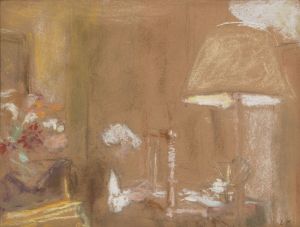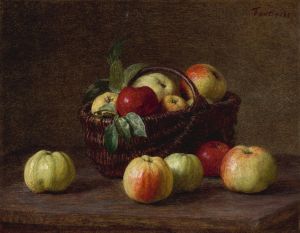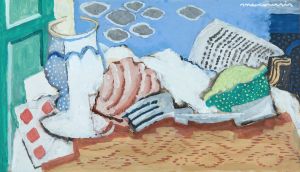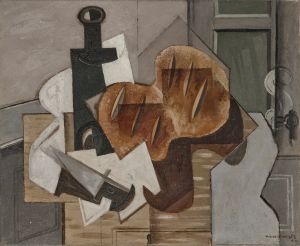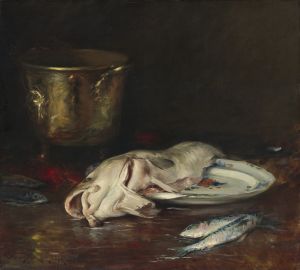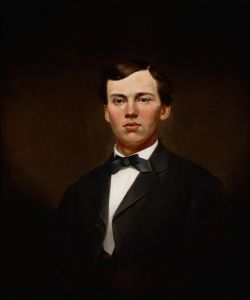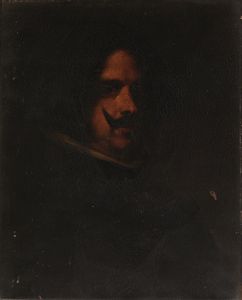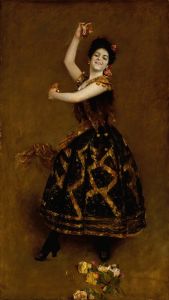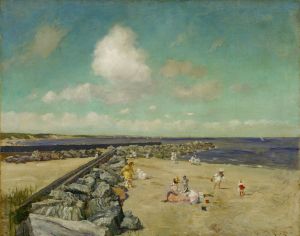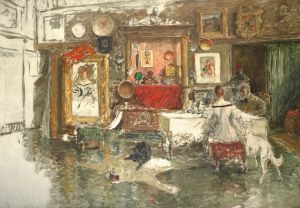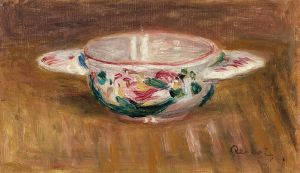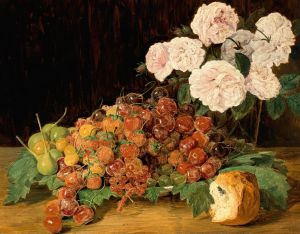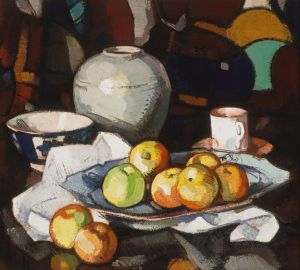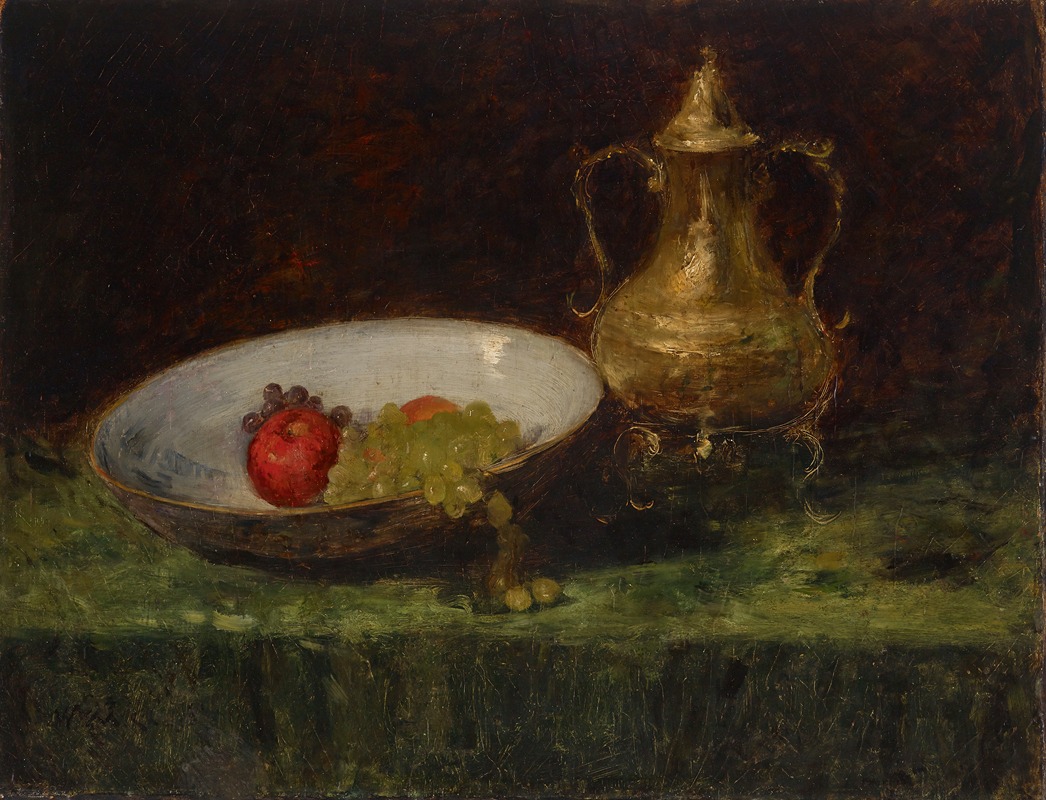
Still Life
A hand-painted replica of William Merritt Chase’s masterpiece Still Life, meticulously crafted by professional artists to capture the true essence of the original. Each piece is created with museum-quality canvas and rare mineral pigments, carefully painted by experienced artists with delicate brushstrokes and rich, layered colors to perfectly recreate the texture of the original artwork. Unlike machine-printed reproductions, this hand-painted version brings the painting to life, infused with the artist’s emotions and skill in every stroke. Whether for personal collection or home decoration, it instantly elevates the artistic atmosphere of any space.
William Merritt Chase was a prominent American painter known for his contributions to Impressionism and his role in the development of American art in the late 19th and early 20th centuries. Among his diverse body of work, Chase created several still life paintings, a genre that allowed him to explore composition, color, and light in intimate settings. While there is no single painting titled "Still Life" by Chase, his still life works collectively demonstrate his skill and artistic philosophy.
Chase's still life paintings often feature everyday objects, such as fruits, flowers, and household items, arranged in a manner that highlights their textures and colors. His approach to still life was influenced by both European traditions and his own innovative techniques. Chase studied at the Royal Academy in Munich, where he was exposed to the dark, rich palettes of the Munich School, which initially influenced his style. However, upon returning to the United States and later traveling to Europe, he embraced a brighter palette and looser brushwork, characteristic of Impressionism.
One of the notable aspects of Chase's still life paintings is his use of light. He had a keen interest in how light interacts with objects, creating reflections and shadows that add depth and realism to his compositions. This focus on light can be seen in works such as "Still Life with Watermelon" and "Still Life with Brass Bowl," where the play of light enhances the textures of the objects depicted.
Chase was also known for his ability to capture the beauty in mundane subjects. His still life paintings often elevate simple objects to a level of fine art, encouraging viewers to appreciate the aesthetic qualities of everyday life. This approach aligns with the broader Impressionist movement, which sought to capture the fleeting moments and beauty found in ordinary scenes.
In addition to his technical skills, Chase's still life paintings reflect his broader artistic philosophy. He was a strong advocate for the importance of art education and played a significant role in shaping the American art scene through his teaching. Chase founded the Chase School, later known as the Parsons School of Design, and taught at the Art Students League of New York. His influence extended to a generation of American artists, many of whom adopted his emphasis on color, light, and the beauty of everyday subjects.
Chase's still life works are an integral part of his artistic legacy, showcasing his mastery of technique and his ability to find beauty in simplicity. These paintings continue to be celebrated for their contribution to American Impressionism and their reflection of Chase's unique artistic vision. While specific details about each still life painting may vary, the overarching themes of light, color, and the elevation of the ordinary remain consistent throughout his work.





